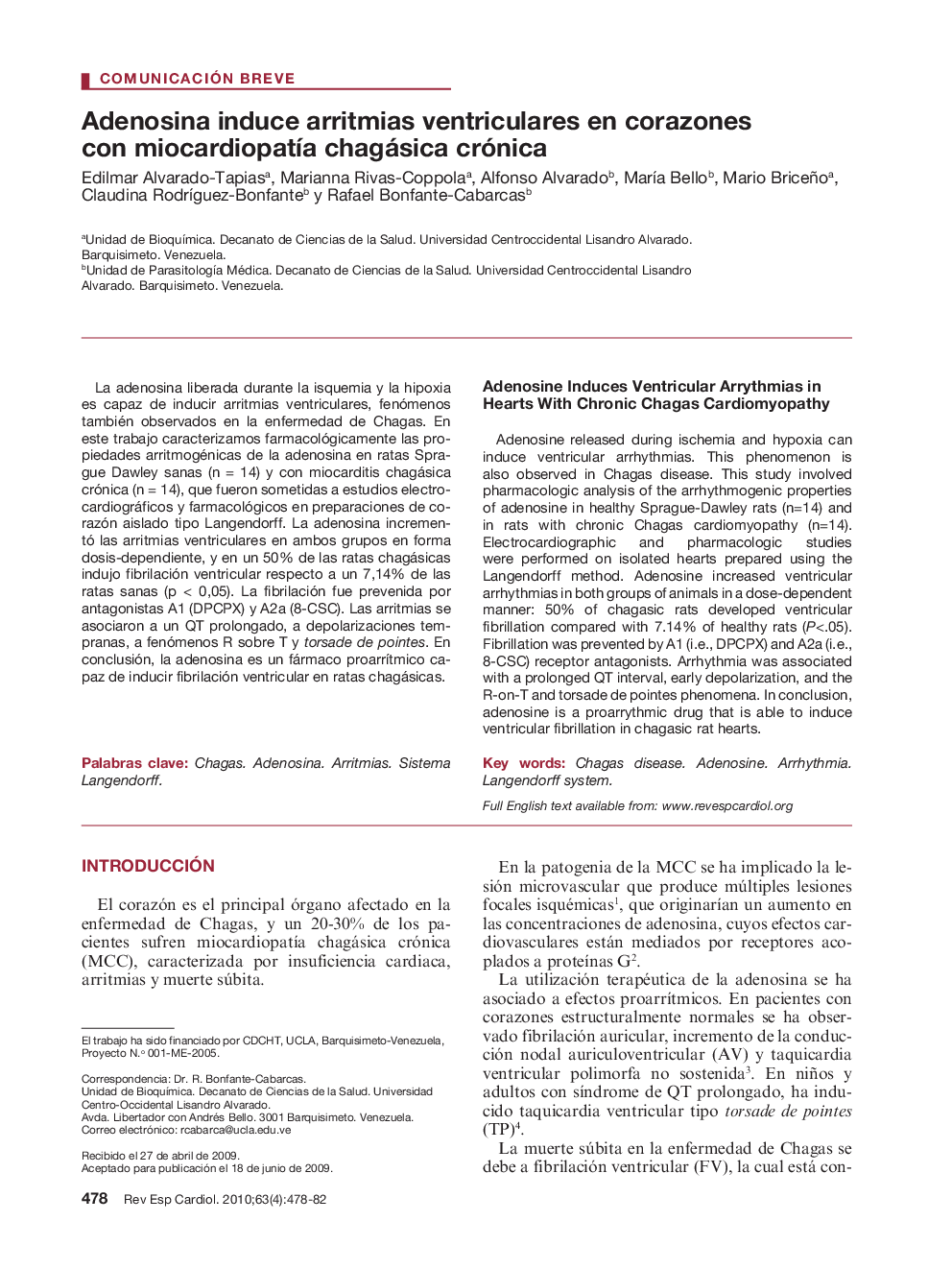| Article ID | Journal | Published Year | Pages | File Type |
|---|---|---|---|---|
| 3014001 | Revista Española de Cardiología | 2010 | 5 Pages |
Abstract
Adenosine released during ischemia and hypoxia can induce ventricular arrhythmias. This phenomenon is also observed in Chagas disease. This study involved pharmacologic analysis of the arrhythmogenic properties of adenosine in healthy Sprague-Dawley rats (n=14) and in rats with chronic Chagas cardiomyopathy (n=14). Electrocardiographic and pharmacologic studies were performed on isolated hearts prepared using the Langendorff method. Adenosine increased ventricular arrhythmias in both groups of animals in a dose-dependent manner: 50% of chagasic rats developed ventricular fibrillation compared with 7.14% of healthy rats (P<.05). Fibrillation was prevented by A1 (i.e., DPCPX) and A2a (i.e., 8-CSC) receptor antagonists. Arrhythmia was associated with a prolonged QT interval, early depolarization, and the R-on-T and torsade de pointes phenomena. In conclusion, adenosine is a proarrythmic drug that is able to induce ventricular fibrillation in chagasic rat hearts.
Related Topics
Health Sciences
Medicine and Dentistry
Cardiology and Cardiovascular Medicine
Authors
Edilmar Alvarado-Tapias, Marianna Rivas-Coppola, Alfonso Alvarado, MarÃa Bello, Mario Briceño, Claudina RodrÃguez-Bonfante, Rafael Bonfante-Cabarcas,
